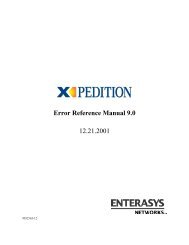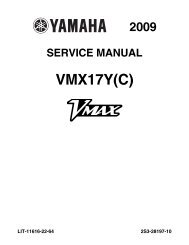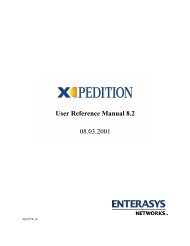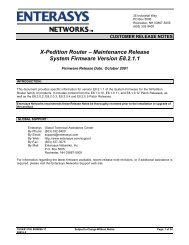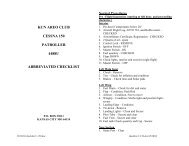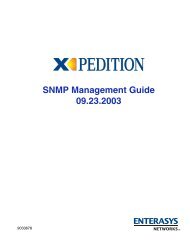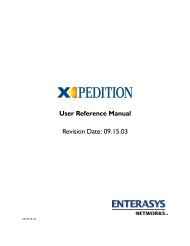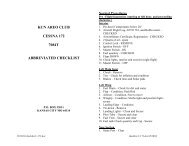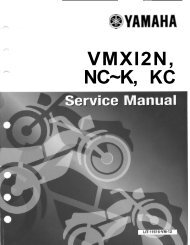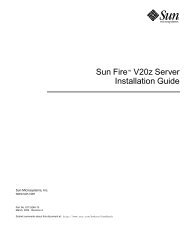X-Pedition Router – Maintenance Release System Firmware ...
X-Pedition Router – Maintenance Release System Firmware ...
X-Pedition Router – Maintenance Release System Firmware ...
You also want an ePaper? Increase the reach of your titles
YUMPU automatically turns print PDFs into web optimized ePapers that Google loves.
KNOWN RESTRICTIONS AND LIMITATIONS<br />
Hot-Swap I.D.<br />
Point-to-Point Protocol (PPP) does not renegotiate when a POS card (with Automatic Protection<br />
Switch enabled) is hot-swapped, or if either end of a connection goes down. A system reboot is<br />
required at both ends in order for PPP to renegotiate.<br />
08223<br />
Interface I.D.<br />
If an IP and IPX interface are created for a VLAN, and the IP interface is removed, traffic may stop<br />
on both the IP and the IPX interface.<br />
Workaround: Comment-out the IPX interface, and then comment it back in.<br />
F1421<br />
Internet Control Message Protocol (ICMP) I.D.<br />
Ping packets sent by the X-<strong>Pedition</strong> have the default Type of Service (ToS) field assigned to 0xFF,<br />
which does not conform to current RFCs.<br />
Workaround: This value may be changed with the ping command parameter tos.<br />
If the X-<strong>Pedition</strong> receives a packet larger than the receiving port's MTU size, and it cannot fragment<br />
that packet, the packet will be dropped. If the packet was to be routed, the X-<strong>Pedition</strong> will reply with<br />
an ICMP error message; however, if the packet was to be bridged then no message will be sent.<br />
Workaround: Configure the X-<strong>Pedition</strong> to route only ICMP packets.<br />
F0662<br />
F1268<br />
Internet Protocol (IP) I.D.<br />
Entering a static route with a 32-bit netmask and the same destination and preference as an existing<br />
host route (and vice-versa) will cause GateD to stop functioning.<br />
F1399<br />
Layer-2 I.D.<br />
The maximum available number of static-entry filters is 505. F0731<br />
Layer-3 I.D.<br />
The X-<strong>Pedition</strong> may core dump while attempting to delete an Layer-3 flow entry; it may be unable to<br />
find the entry, or it may find a faulting address.<br />
If a link is disconnected and then reconnected while the X-<strong>Pedition</strong> is passing traffic, Layer-3 entries<br />
may not be deleted correctly. If routing is configured, the X-<strong>Pedition</strong> will fail to redirect traffic to a<br />
new route.<br />
F0443<br />
F1358<br />
Layer-4 Bridging I.D.<br />
When operating in Layer-4 bridging mode via the vlan enable l4-bridging configuration command,<br />
the user must only employ the default address-bridging mode for Layer-2 learning on ports in the<br />
Layer-4 bridging VLAN. In addition, the user must not apply the port flow-bridging <br />
command to any ports in an Layer-4 VLAN.<br />
NOTE: This restriction exists only for T-Series line cards. These cards are recognizable by the “T”<br />
printed upon them.<br />
F0760<br />
Link-Aggregation Control Protocol (LACP) I.D.<br />
LACP SmartTRUNK will not connect to a destination router when located on a line card in slots 9-16<br />
of the X-<strong>Pedition</strong> ER16. Unlike Huntgroup protocol SmartTRUNKs, LACP SmartTRUNKs should<br />
function in the upper slots.<br />
F1627<br />
10/24/01 P/N: 9038090-17 CUSTOMER RELEASE NOTES Page: 22 of 34<br />
F0615-F Subject to Change Without Notice



